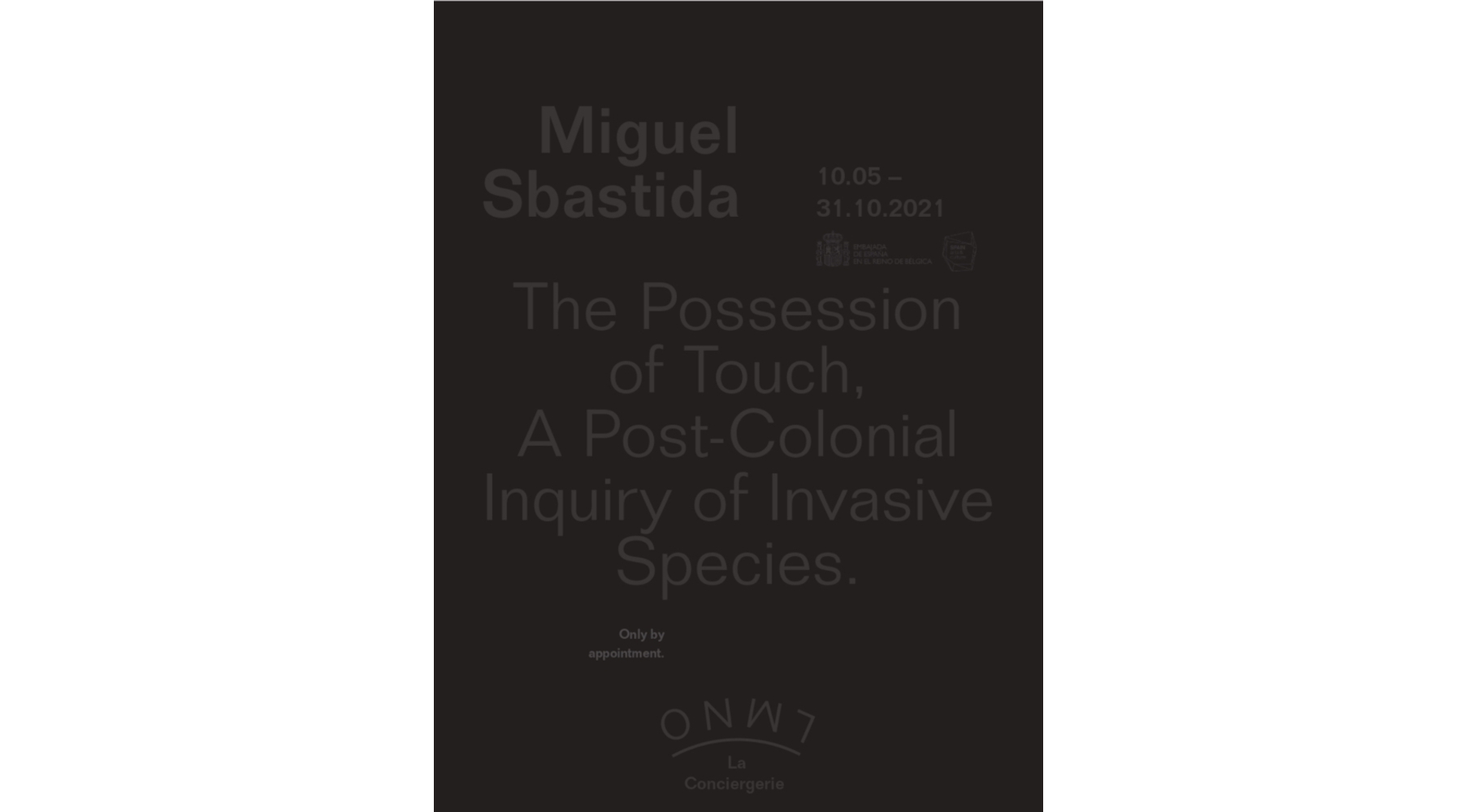June 10 - October 31, 2021

Abstract
“The Possession of Touch, A Colonial Inquiry of Invasive Species” develops from a selection of plants native to Colonial territories, which bear the names of European figures (politicians, scientists, scholars) as part of their scientific nomenclature. Many of these plants were imported to Europe in small portable terrariums and some have become invasive species that pose a threat to local biodiversity; critically reinforcing the environmental transformations caused by climate change.
These species not only portray and reproduce colonial ecocide horror, but are also a silent and delayed aftermath of an invasion that similarly took place in remote conquered lands. They are here because we were there, and they have come whispering the very name of our own ancestors.
Concept
During the colonial period, a vast number of places and beings were named and classified. Animals, plants, fungi and insects were grouped according to species, genus, kingdoms… and much was theorized about their kinship along the branches of evolution and throughout the entire history of life on Earth. Spaces were divided on maps, imposing an invisible territorial geometry over a fluid, organic and interconnected world. Rivers, mountains and extensive regions were named after scientists, politicians and scholars that never set foot on those lands, climbed its mountains or bathed in its waters.
A great number of “new” plants were discovered and named after illustrated colonial figures, in a process of appropriation that transcended the physical, and operated from cultural and symbolic standpoints. Cities named equally in Europe and the Americas reinforced an ideological domination over these spaces, and its inevitable servitude to the European capitals. It also happened in the biological world and today, there are more than nine thousand plant genus and species that have been named after European figures (Gottlieb Ludwig, Johann Friedrich von Eichhorn, Jean Robin, Nach J. Ernst Gunner…), many of which have been since introduced to new habitats. Some have become naturalized while others have been reported as invasive species that threaten the biodiversity and resilience of our ecosystems. A process of delayed destruction that is only being worsened in the face of anthropogenic Climate Change.
The study, recollection, trading, displacement and introduction of many of these plants was made possible thanks to the invention of the Wardian Case, a small and portable greenhouse terrarium that had major ecological impacts. The case allowed for plants to travel from remote locations and across severe climates without seeing the damage often caused by the ocean's saltwater, drought or drastic temperature changes. Those plants that were given names during this period of exploration and domination traveled to Europe, embodying the mirrored horrors of a slow and silent colonial destruction. In some ways, these species returned (i.e. Ludwigia Peruviana, Eichhornia Crassipes, Robinia Pseudoacacia, Gunnera Scabra…); like ghosts bearing the names the once of invasive colonial figures. They are here because we were there.
Execution
“The Possession of Touch, A Post-colonial Inquiry of Invasive Species” develops from a selection of plants native to Colonial territories, which bear the names or European figures (politicians, scientists, scholars) as part of their scientific nomenclature (i.e. Gunnera Scabra – A nowadays invasive plant named after Johan Ernst Gunnerus (1718-1773), a Norwegian clerk). Through a botanic investigation of species introduced in Europe from the colonies, the project unveils the history that lies behind the naming of these plants while tracing its possible contribution to the effects of climate change. This paleo-climatic evolution can be studied trough the observation of flowering patterns across diverse specimens that are currently present in botanical databases.
I am currently collaborating with the Royal Botanical Archive of Madrid, and with the MAF herbarium at the Faculty of Pharmacy in Universidad Complutense of Madrid. In its paleo-botanical archives there is a great number of plant samples originally gathered, classified and brought to Europe during numerous scientific expeditions, such as the one of Ruiz y Pavón across Peruvian lands; among many, many others. Through the study of its collections, I am studying how they were documented, drawn by artists, catalogued, and named. I am trying to understand these processes in the context of the botanical garden as a device that illustrated foreign lands under the hegemony of an empire, and I am trying to do so while paying attention to the role that these plants have had in contributing to past and present loss of biodiversity in of our local ecosystems.
Departing from this, I will develop a series of bidimensional works inspired in botanical drawings, which will include historical information of the plant's name origin, its native regions, and its invasive status. Parallel to these, the project will include a series of glass sculptures inspired in the original Wardian Cases used during the 18th century to move plants across the globe, which will be activated and utilized to remove invasive flora from local environments.